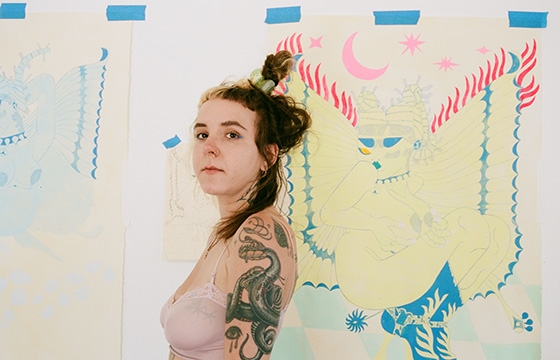I heard something recently that I really enjoyed. An artist friend said, “Being an artist is like, 'Here's a feeling, and here's an extra twelve for free'.” That is especially true of Heather Benjamin. Her work does not sit down, hold back and politely greet you at the door with 20th-century notions of femininity. It's raw and funny, intense and immediately relatable. Sexual? Yes. Honest-to-God real? Most definitely. I sat down with her this summer to get the real story. Not the pretty, polished, Instagram-ready version, but the dark, gruesome and undoubtedly honest one. I'll take those extra feelings now.
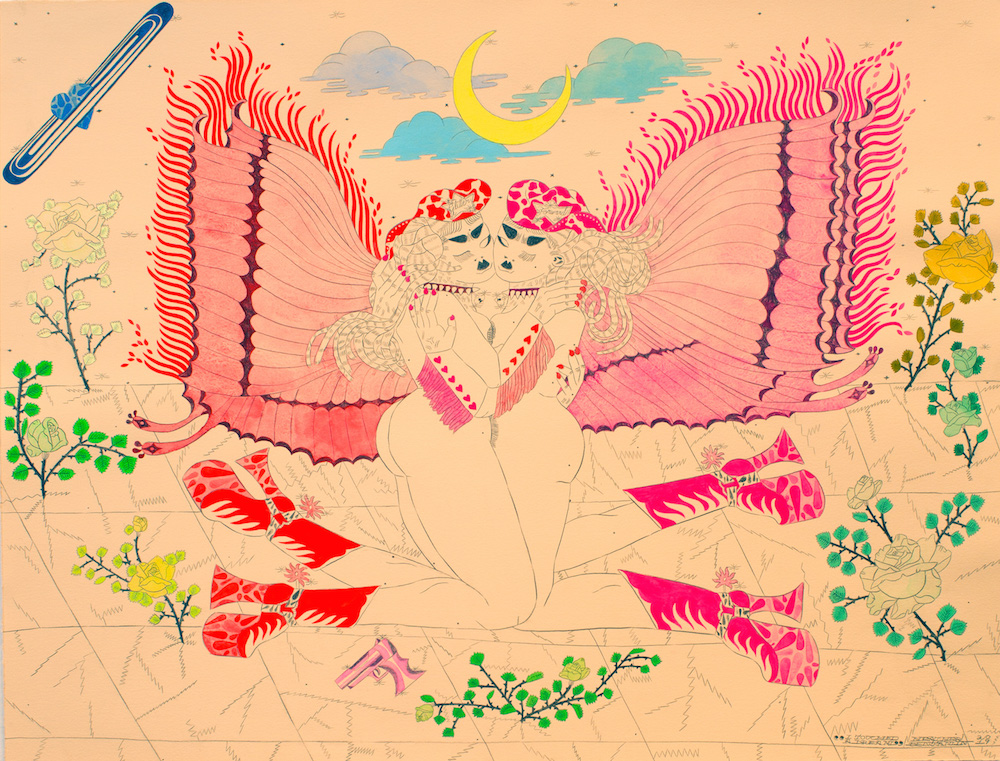
Jessica Ross: You've got an armory of imagery that repeats again and again, and I'm curious, what are some of the ideas behind the broken mirror, flaming wings and thorny roses? What's the significance of this particular symbology?
Heather Benjamin: I always use a handful of symbols that I feel work well as vehicles for the ideas in my work. My protagonist and my symbols evolve, based on where I'm at in my life and what I need.
In the most recent chapter of my work, I've been going hard with the symbols you mentioned. The mirror to me is about self-perception, how vanity and obsession can encompass self-confidence and feeling beautiful, as well as really loving yourself based on how you've taken care of and adorned yourself physically. On the flipside, it can just as easily encompass a different kind of visual obsession, which isn't so much vanity as it is despair; discomfort with your self-image, which includes body dysmorphia, negative self-talk, disassociation. These are opposite extremes I've struggled with a lot in my life, which have manifested in self-destructive tendencies on both ends. Shattering the mirror can stand for feeling such intense negativity about yourself that a look in the mirror shatters it, but can also symbolize a more hopeful direction, which is intentionally shattering the mirror so that you no longer obsess over your physical form, nixing the vanity and focusing instead on the deeper, more important aspects of your being.
The flaming butterfly wings represent freedom hindered by the very notion of itself. Due to our own self-consciousness, the roadblocks we experience as women in this world are tempered by the hurdles we have constructed for ourselves on how we should live. They also burn with strength as opposed to destruction; it's that duality in my work that truly encompasses how I feel about everything. The thorny rose classic symbol of femininity and sensuality speaks to that, as well, manifesting as a gorgeous bloom that exists to be enjoyed and appreciated but simultaneously has evolved to protect itself with spiky thorns. Smart flower.
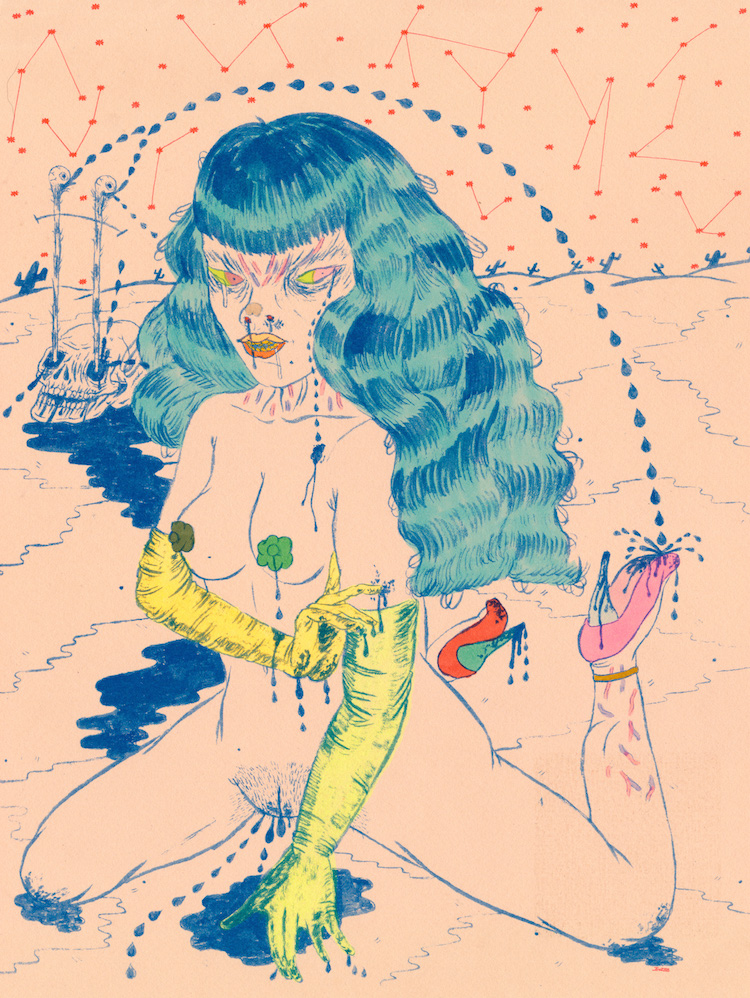
You've said your cowgirls are incarnations of you playing out various psychological states and dealing with issues of trauma and womanhood. What are the pros and cons of having your art practice be your therapeutic outlet?
The number one thing is that I'm able to have a therapeutic outlet that I love and actually works for me. I feel so grateful that this came naturally—it's always been such a no-brainer. Although I haven't tried therapy, I have a lot of time to think about my life and my priorities and personal psychological progress while I draw. I also expel a lot of my tension and articulate things for myself continually while working.
I'm making work about my innermost self, pathos, trauma and all. So if someone can relate to something I drew, they are really relating to a very deep part of me, something that embraces a measure of sadness, fear, self-consciousness, and feelings of isolation. When you're in those dark places, you always wonder, what's wrong with me? Is this normal? When my work speaks to another person, it's incredibly comforting and validating. I'm not making my work with the intention of trying to speak for anyone else—it's like my diary—but when people do relate, that always chips away a little piece of my existential dread.
As far as the cons, the big one is that I'm basically turning myself inside out for the world, all my darkest pieces on display. Fundamentally, I'm okay with that, or I never would have started making this kind of work. But I'd be kidding myself if I said it didn't get weird or make me feel a little too vulnerable at times. There have been times people have approached me, or clearly judged me about something in my work, and that has definitely made me uncomfortable, angry, or even triggered. But that's the risk I know I'm taking by putting out this kind of personal work, and the positive responses relating that the work resonates with people outnumber and outweigh the negative. So it's all worth it to me.
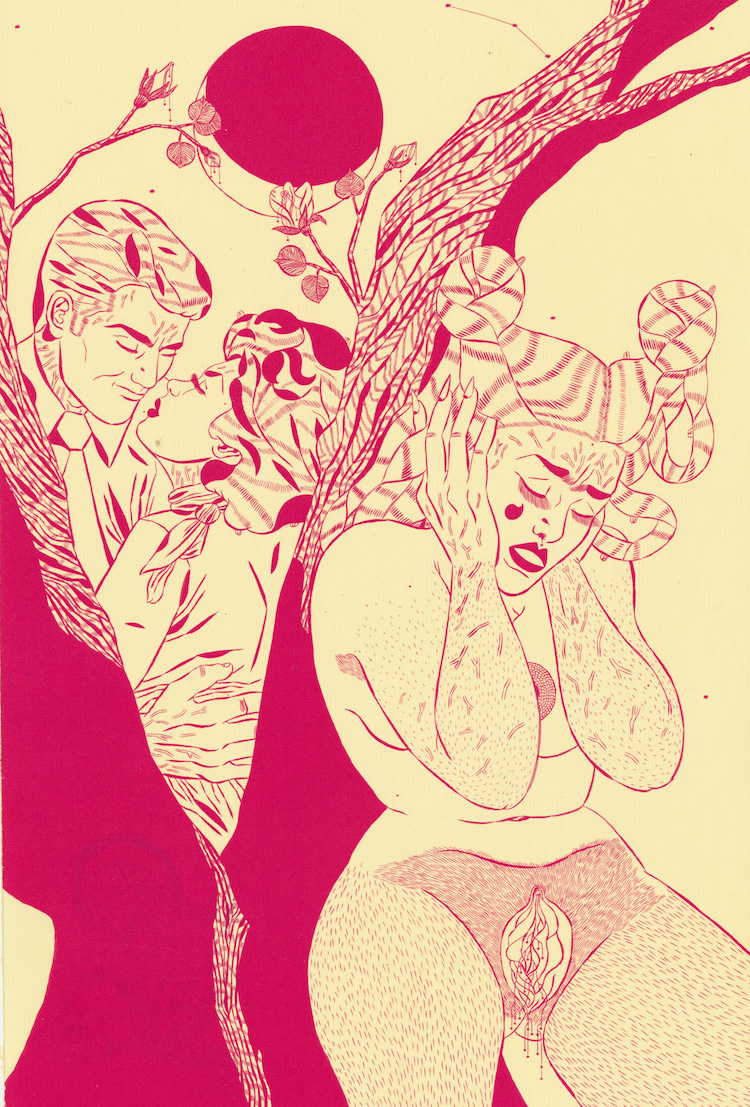
What are some favorite romantic, albeit sexist, comic tropes you like to subvert in your work?
I really adore this one formulaic scene that exists on the cover of so many 1950's/1960's romance comics. There are three characters, a man and a woman, in some kind of embrace, and then a third woman, looking at them crying or turning away upset. Pretty much the only thing that ever changes is the order of the threesome in the foreground and background. It's so melodramatic, and even if you've never been in that literal situation, I'm sure everyone at least knows the feeling of lost love and rejection, how lonely that makes you feel... to put it mildly.
When you open up the comics they're too melodramatic—insane, like, “Bobby was going to take me to the pep rally tonight, but today I saw him at school kissing Vicky near my locker, and then she told me he never wants to see me again!”. It's cringe-y on a lot of levels, especially looking at it in 2019, how amped up and old school it is.
Honestly, I always looked at it in a tongue-in-cheek way, because even when you're in that really intense emotional state of despair, dealing with lost love, jealousy, all that ugly stuff, I think you always know in the back of your head how meaningless the world really is and nothing actually matters. Maybe I'm just speaking for myself here, I don't know, but for me, even when caught up in that kind of really earthly emotional dilemma, I still have this kind of cynical zoomed out world view. So I always viewed those outdated comics through that sort of lens. I tend to enjoy the delicious melodrama of it all, but then at the same time, know that these classic tropes are amplified to serve the point of how ridiculous and meaningless it all is anyway. I see it as such a caricature of itself.
I've had a lot of feelings for a long time about these comics, but it didn't occur to me to riff off them in my work until I saw Charles Burns do it. Black Hole was one of the first alternative comics I read when I was younger, and it blew my 15-year-old mind. I loved seeing him subvert those tropes, so I was inspired to start subverting it myself. So much of my work at that time was already dealing with topics like jealousy and comparing myself to other women, so using the visual to represent that via the three-person format made a lot of sense for me.
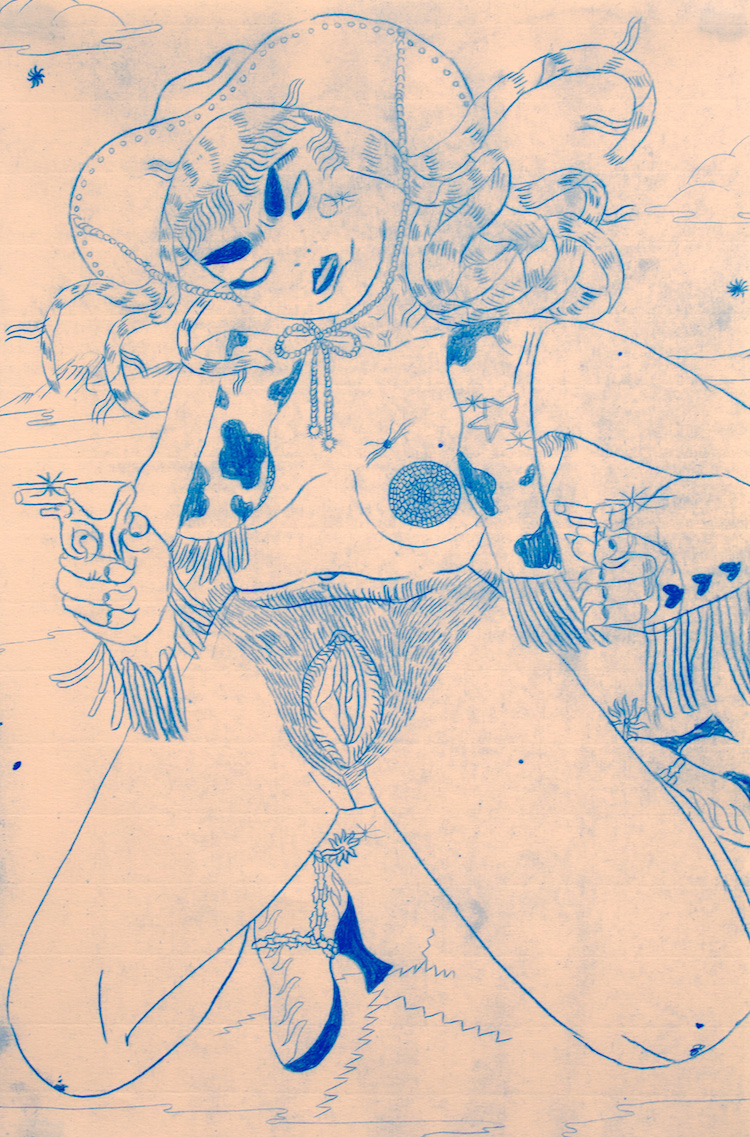
True or False: Yee, and most importantly, haw?
100% true.
You've curated some awesome group shows the past couple years at various galleries. How does curation provide a change of pace from your own practice? What is your favorite part about organizing a show?
I've been really lucky to have had the opportunity to curate twice now and am so grateful for it. In 2018, I curated Maiden Form at Andrew Edlin in NY, and this year I curated Playdate at New Image Art in LA. It's definitely different than what I'm used to, having only ever operated as a solo artist. Curating is different because your priority becomes other peoples' work—engaging with each piece on a deep level, deciding how to do it justice in regard to the installation, figuring out how it relates conceptually and spatially to other work in the show.
All in all, I really enjoy curating because I like a new challenge, and it feels good to use my brain in different ways than I do by just focusing on my own work. I feel really lucky to have gotten to this point in my career, a lot of it due to people who believed in my work and gave me opportunities to show through the years. It feels really good to be able to do that for other people now and try to use whatever platform I have to lift up artists around me.
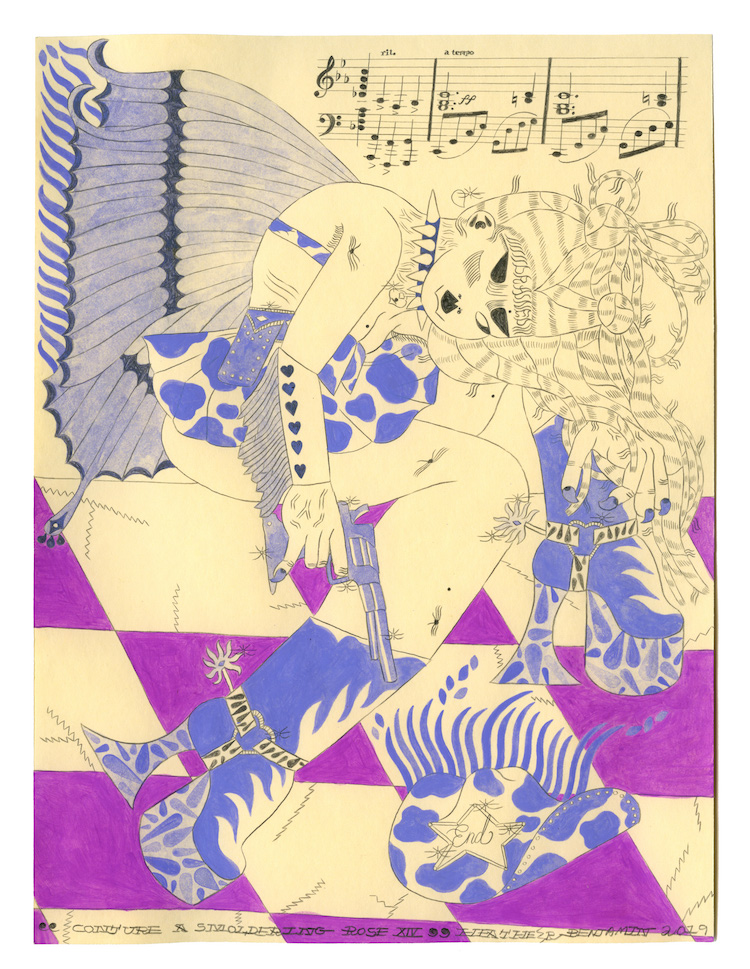
Now that you're a little farther into your career, is there anything you want to say to your younger self? Any wise words for a young Heather?
Not really with regards to my work, but definitely on a personal level. At the risk of sounding cliche, I would go back to early twenties Heather and reassure her that everything will be okay. I had a super intense crippling level of anxiety for years in my twenties. It affected my daily life on a massive scale. At times I felt completely paralyzed by fear. And I remember I couldn't believe it and saw no end in sight.
I wish I could go back and be, like, “Hey, this really sucks right now, and I know it feels like nothing can fix it, but in a couple of years you're going to start finding and figuring out ways to slowly feel better and be better, and this really does eventually stop being a life-altering thing.”
I worked on my anxiety for years and am no longer dragging that same kind of darkness around with me. Not that I'm like this perfect person now, but I no longer struggle with the intensity that defined my twenties. I had tunnel vision, and now I'm way more zoomed out. I'd love to go back and just give myself a little hug, because I really did not think it was ever going to get better, or that I'd ever figure out how to move through it. But I did.
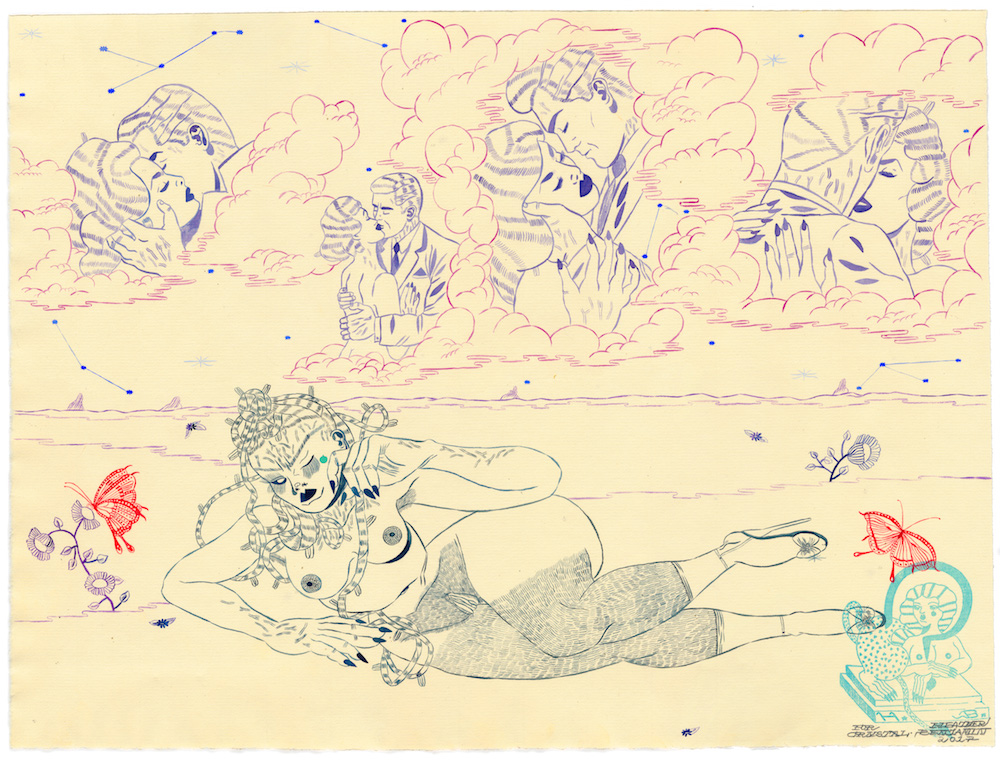
It's comforting to see such brutally honest depictions of sexuality, twisted and wild and raw, and I think that's what's so great about your work. People can see themselves in your figures. Do you have any interesting anecdotes of audience reactions to your work?
So many, on both ends of the spectrum. Some I love to hear, and some make my skin crawl. On the lighter end, a favorite thing to hear, and I've heard often, is people telling me they've hung one of my drawings up in their bedroom, and if they bring someone home who thinks it's weird or uncomfortable, they won't sleep with them, ha ha... I like the idea of the rawness being a litmus test for potential lovers!! Funny and true.
On the flip side, the bad reactions are, without fail, from men who look at my work and just immediately think I'm trying to invite personal sexual attention, which is not my intention. But yeah, I've gotten all kinds of gross and infuriating comments that stem from the content of my work. Those sorts of reactions always tend to activate a lot of the negative emotions I try to grapple with in the first place—shame, disassociation, a general distrust of men... I guess it just feeds the fire.
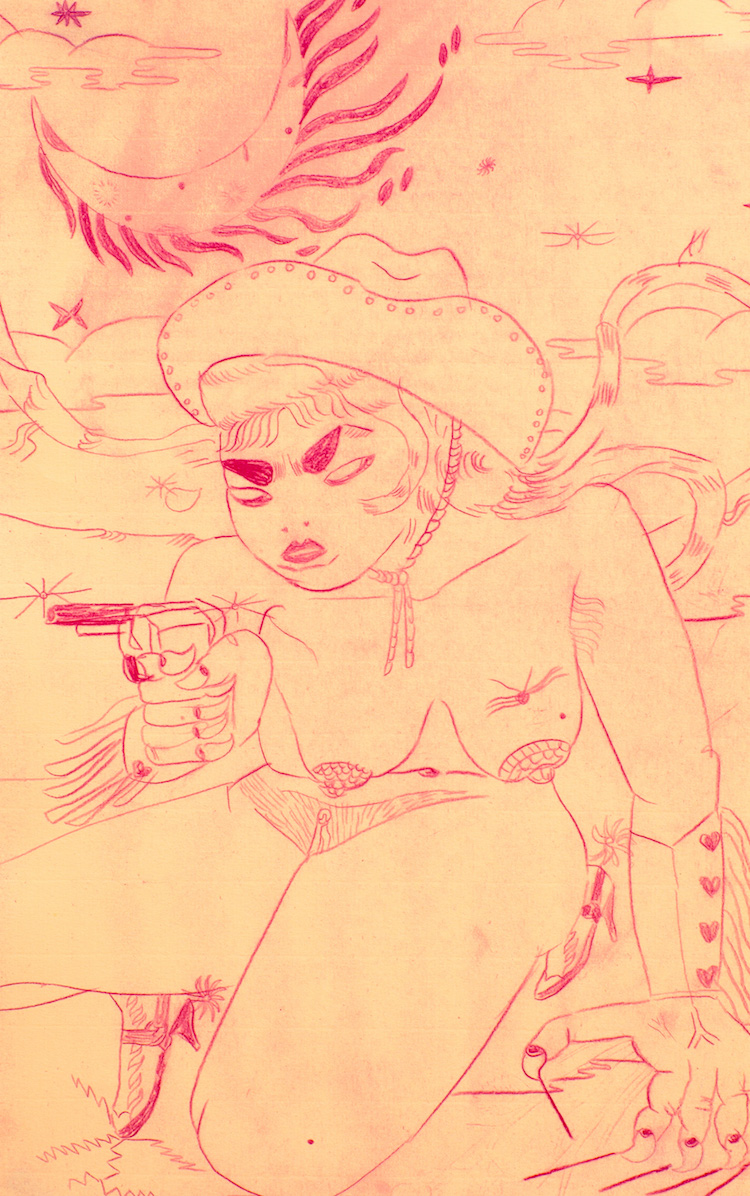
What's on the horizon for you? How's 2020 looking?
I'm working on two solo shows for 2020 right now, one in Summer 2020 in Los Angeles at New Image Art, as well as one in New York. I'm also focusing on pushing myself in the studio, allowing some time to experiment with larger works and new media. For the last couple of years, I was really working deadline to deadline, so I felt like my growth on an experimental front, while it did happen, was moving slowly. I want to make sure that, this year, I give myself enough downtime to work with new ideas and figure some stuff out and experiment, which can be hard to do when it's crunch time. I feel really drawn to making sculptures to accompany my paintings right now, so that's something I'm going to play around with in the studio this year.

